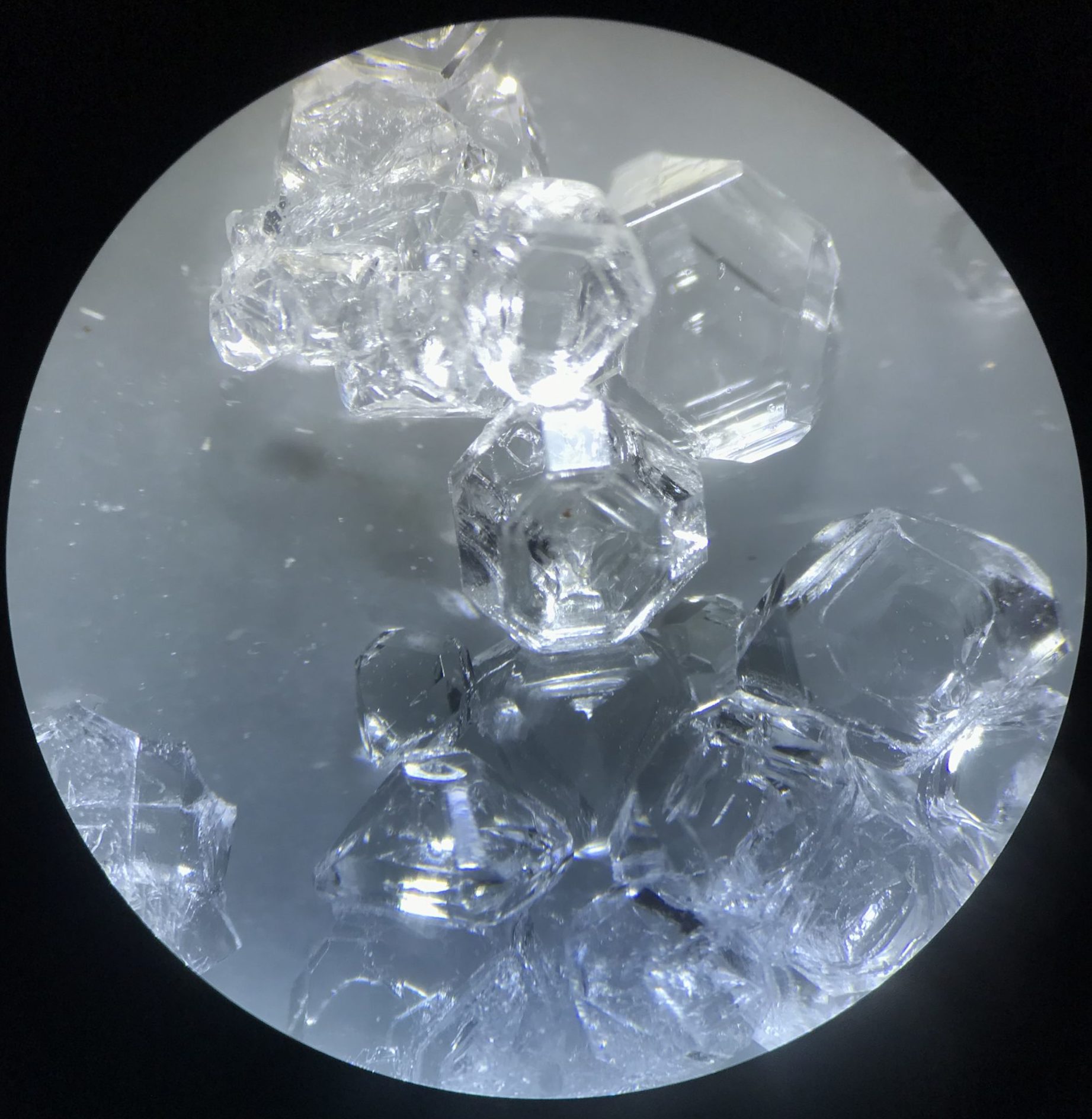- Learn from the Living Library
Recipe for Growing crystals
GENERAL INFORMATION
Crystals are the result of a chemical process by which some atoms or molecules in a solution get organized in a structurally repeating pattern.
Alum (potassium aluminium sulfate dodecahydrate) forms crystals that have triangular facets and can be grown on many substrates, such as silk, velvet, felt, cardboard, wood, wool etc.
RECIPE
INGREDIENTS FOR 400mL of Alum Solution
- Alum powder 125 g
- plus some more just in case we will try to reorganize these molecules into crystals.
- Water – 400 ml/gr
- To dissolve the alum powder and reorganize it into a crystal
- Silk
- Or another substrate for the alum crystals to attach to
TOOLS
- Cooker or kettle
- A glass container
- big enough to fit your piece of the substrate without touching the sides or having to fold or crease it. Make sure this is totally clean.
- a water bath
- Spoon
- Optional: Food coloring
METHOD
Preparation
- Put the glass container in the water bath without making the glass jar float. This will keep your crystal solution warm for longer and help it cool down very very slowly (resulting in bigger crystals).
- Put this in a (warm) place where you can leave it for 8-16 hours without anyone moving or touching it.
Dissolving the alum
- Measure 400 ml and put it in the glass jar (which is already inside the bain-marie to keep it warm).
- Spoon by spoon, add the alum while stirring. When no more alum dissolves and just sinks to the bottom, your solution is saturated. If there are grains on the bottom, pour off the liquid and clean the jar before continuing. You don’t want anything on the bottom of the jar.
- Suspend the substrate inside the glass jar without it touching the bottom or the walls of the jar
Let the crystals form
- Now leave the crystal to grow. The less you touch it, the easier it is for the molecules to find each other on the silk and form big beautiful crystals.
- If you have the patience, give it 16 hours. But pretty decent-sized crystals will have formed as soon as 6-8 hours later.
- Rinse them under cold tap water and let them dry.
Variations
- Add a colorant such as black soot ink (other natural dyes are still experimental!)
- Turn your crystals opaque white by putting them in the oven for 10 minutes at 100 degrees Celsius.
- Use different textiles (e.g. velvet attracts many small crystals)
- Lay your silk flat in a bowl to cover the entire surface with smaller crystals
- Glue a piece of silk on an LED with hot glue to grow a crystal that you can use in electronics projects instead of plastic casings (see video below).
- The same technique can be used with epsom salt, sugar and borax.
- Adding conductive paint to the solution creates crystals that can be used as capacitive sensors.
REFERENCES
